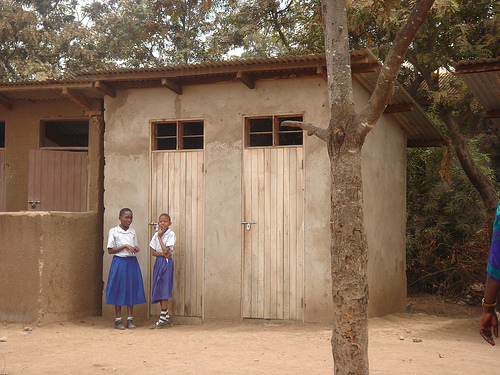One of the challenges for designers like myself who want to explore more social change work is how to physically go about it tackling it. A web app for a public health non-profit or a tangible guide for street vendors is the outcome to solving a need. But what happens between the idea and the execution? How do we mind the gap? As I seek ways to expand my role as a designer from solely creating graphic design for causes to seeking out actual problems and collaborating with others to discover the best solutions, any insight is a boon.
Last week I attended a lecture by Andréa Pellegrino, a principal in the working world of design for social change. Her LinkedIn profile summary begins: “innovative senior executive working at the intersection of strategy, research, communications and business development for forward-thinking organizations dedicated to driving positive social change and building brand equity.” Her latest project , together+, is intent on fighting xenophobia in South Africa, one community at a time. Using this undertaking as a touchpoint, the talk centered around the critical processes of actualizing solutions to social challenges with an entrepreneurial spirit.
Pellegrino’s together+ initiative spurred four different design solutions—a community mural project; Blooming Together, a curriculum-based children’s book proposed to be sold into the local school system; an informative poster and pamphlet on healthcare rights, and; a welcome guide to immigrants.
Solutions come from community need. Partner with the community to identify the problem. Instead of applying assumptions about what you think is the problem, listen to the voices from within the community. Learn how to communicate with the community you are involved with. Also by getting local and starting small, it is easier to maintain and measure results. If a solution works on a small scale, it can be expanded to a larger audience.
Approach the project with a business model perspective. Pellegrino applied real business strategy to resolve the xenophobia issue. Develop a plan and a timeline, undertake research, estimate hours and resources needed, develop a budget. This not only helps clarify things for grants and fundraising purposes, but also provides actual mileposts for progress.
Multi-disciplinary teams create the best solutions. The whole notion of design thinking relies on its cross-genre approach to problem solving. Andréa reached out to her network through all of life’s touchpoints—alumni network, community involvement, geographical contacts, her collaborations with corporate clients, as well as her partnerships from past employment. Reach out to your network and build collaborations.
“Getting corporations involved is the future of this kind of work.”—Andréa Pellegrino
Assess impact. The bottom line. While social change will have different metrics than a promotional direct mail campaign, there are tangible ways to measure effectiveness. Allow funding for this important step.
To these stepping stones for implementation I would like to add one I consider to be paramount: finding passion. Pellegrino is right when she says that it takes guts to do this type of work. It’s not easy. Without passion, none of this work would come to fruition. Her perspective on these considerations when implementing social change gave me confidence that there are concrete ways to take action on an idea. Many designers tend to focus on the visual solution when sharing in this vein. Maybe it’s easier to hide behind the smoke and mirrors of a Mac than being out on the front line. Although that’s where some of us should stake our claim.
IMAGE CREDIT. Courtesy of Northfield.org.

